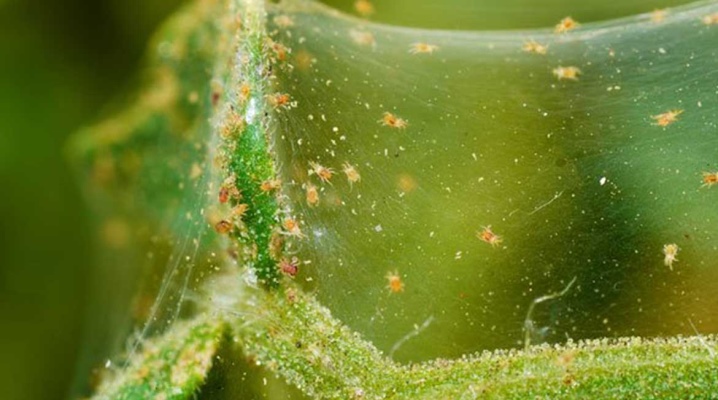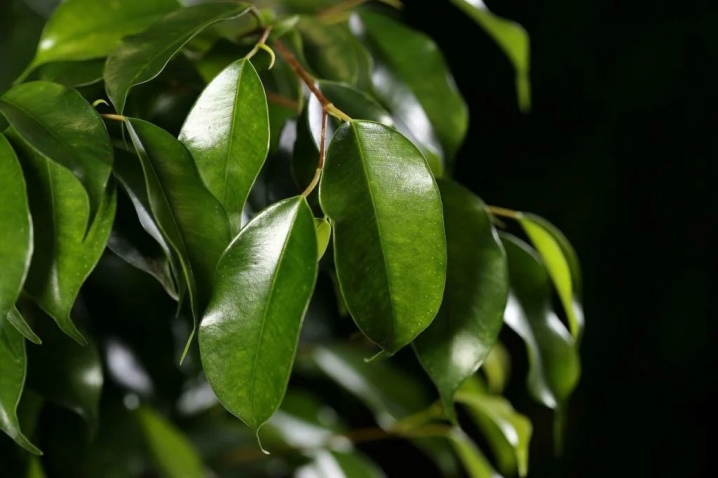Using ammonia for spider mites

To grow a fruitful plant from a small grain is a big job. Each gardener is anxious about his "wards": he regularly irrigates, sprays, loosens the soil and feeds the plant. But even careful care is not a guarantee of the absence of pests, for example, a spider mite. It would seem that it is a small insect, but it can harm the crop and even eliminate the plant.

The action of the folk remedy
The following signs indicate a defeat by a pest:
- white-yellow spots on the back of the sheet;
- the plant is curled with cobwebs and literally "suffocates";
- yellow color of the seedling and low crop height.
Almost all gardeners strive to minimize the use of harmful chemicals in their plots as much as possible, therefore they turn to folk methods of struggle. One of the most common spider mite remedies is ammonia. Almost everyone knows him and not only in agricultural practice.
It should be said that ammonia is an independent substance, and upon contact with water, it forms ammonia. It is he who is used to feed the beds, as well as against harmful insects.
The substance improves the quality of the crop, but its main advantage over other means is the significant nitrogen content, which is so important for the growth, protection and development of the plant. It is he who helps in the fight against the spider pest.

How to breed ammonia?
Before using the product, it is important to prepare the plants:
- remove all affected parts from diseased plants;
- wash the plants thoroughly and let them dry.
After drying, you can apply the "healing elixir". To prepare it, pour 1 tbsp into a 10-liter bucket of water. l. chemical compound and mix thoroughly. The resulting liquid is sprayed with plant leaves. As a positive consequence - nitrogen saturation of herbal. It is advisable to repeat the procedure after 2 weeks.

How to apply?
In addition to this versatile method, there are many variations of the solution and processing methods. Remember that all the "fight" must be carried out before flowering or after.
Ammonium is actively used on cucumbers not only as a method of protection, but also as a fertilizer. To remove the pest, you can mix a couple of tablespoons of 10% ammonia and 3 tbsp. l. liquid green soap.
The nitrogen source is very important for plants. As you know, lethargy, yellow foliage are all signs of a lack of certain nutrients. Ammonium is a fairly budgetary and effective feeding option. The beds are watered with it: for this, 25 ml of ammonia dissolved in 10 liters of liquid must be poured under the root of the plant. In this case, it is necessary to avoid getting the mixture on the green parts of the crop.
Also, the drug is indispensable in the greenhouse. Usually, a strong ear is the key to a healthy plant and a rich harvest. To grow strong seedlings in a greenhouse, it is important to monitor the general atmosphere, saturation with soil microelements, and moisture. The initial protection of the seedlings is also of great importance. This will help the "people's" solution.
For manipulation indoors, it is better to slightly reduce the concentration and make the treatment with 1 tbsp. l. ammonia and 10 liters of water, the goal is prevention.

This drug can be used in the garden as an insecticide. It evaporates rather quickly, but the smell repels many harmful insects.Not only spider mites, but also aphids (10 liters of water, 50 ml of the preparation and grated laundry soap - 100 g), a bear (3 tbsp. L. Per 10 liters of liquid) and others. For the prevention of this remedy, you need to shed the beds before planting nightshades (tomatoes, peppers, eggplant). If traces of a spider mite were found on a bed with eggplants or potatoes, you can put cotton wool soaked in ammonia next to it. Effective throughout the season.
Indoor plants, although they live in a pleasant environment for humans, are sometimes not protected from harmful insects. A tick can also be seen on home flowers. It is important to prevent damage to all plants. Immediately, you need to treat the flower with a preparation on both sides (1 tsp per 5 l). And check all the "patient's roommates." To prevent contamination, spray all flowers (0.5 teaspoon per 3 liters of liquid). Pay special attention to the treatment of the disease on ficuses. Foci of infection are immediately noticeable on them, and if the house has good humidity and a pleasant temperature, then the insect will begin to multiply, and thereby the attack will become even larger.

For the fight against spider mites, see below.













The comment was sent successfully.